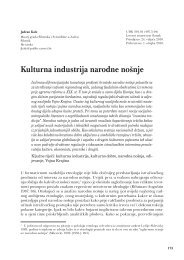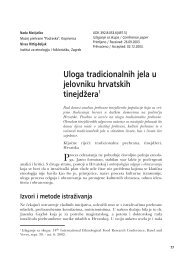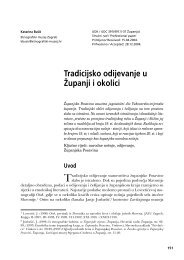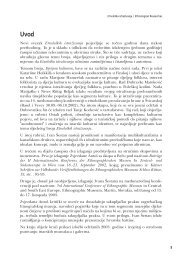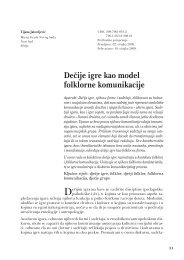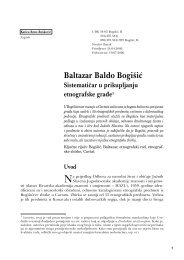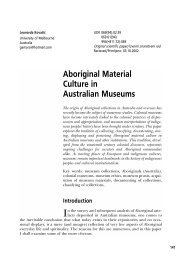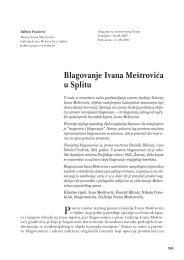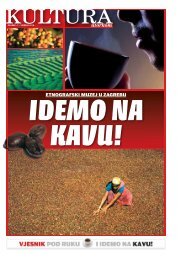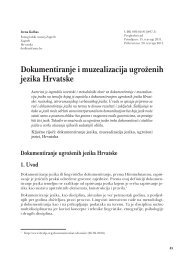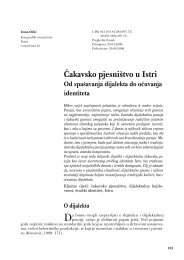Etnoloska istrazivanja / Ethnological researches - EMZ
Etnoloska istrazivanja / Ethnological researches - EMZ
Etnoloska istrazivanja / Ethnological researches - EMZ
You also want an ePaper? Increase the reach of your titles
YUMPU automatically turns print PDFs into web optimized ePapers that Google loves.
Etnološka istraživanja 15/<strong>Ethnological</strong> Researches 15<br />
ethnical element is discerned in toponyms. 15 The consequence of this is the lack of concrete<br />
mythological toponyms for the exact confirmation of the observed structures.<br />
Although small, the number of concealed mythological toponyms cannot prove the<br />
mythical action in the area as it is the case with the western and southern areas in<br />
Croatia. It indicates the conclusion that the Slavs (Croats) in this area (sanctuary in<br />
Kloštar) carried out their pagan rites all the way to baptizing, as well as the peoples<br />
who had lived there before them.<br />
Conclusion<br />
Observing the sanctuary of the Mother of God, the Blessed Virgin Mary through<br />
narration, historical sources, etymological-mythical-spatial analysis, we put it in some<br />
other context from the one which it was in before (religious). This approach to the research<br />
revealed some unknown and new facts about this micro space.<br />
Apart from that, this work helped us read and notice a number of elements for carrying<br />
out a research with another method, cultural-anthropological, which would<br />
reflect the culture of pilgrims, the culture of the event itself during the pilgrimage,<br />
which would, in fact, be necessary.<br />
In the end, the sanctuary in Kloštar got a new dimension through this work, unknown<br />
so far to our cultural and scientific community. Finally, we can read the entire<br />
text in several levels. The first level shows that the ‘’sacred places’’ have the continuity<br />
of ‘’long lasting’’, for thousands of years, and their structure remains firm, almost<br />
unchangeable. The second level, the object of folk worship, the structure that<br />
was changing through time (The Big Mother, Mokoš, The Mother of God). The third<br />
structure, most liable to changes, are the human communities which have settled in<br />
the area around Kloštar in the past three thousand years.<br />
Translated by Tomislav Ređep<br />
15<br />
For example, Kurbegova kosa – indicates Turkish presence, Elinska kosa – from Jelin, Jelinka-Greek<br />
presence (according to Skok, 1971: 772) – indicates the Vlach presence or Jovanovo brdo – indicates Serbian<br />
presence, etc.<br />
310



